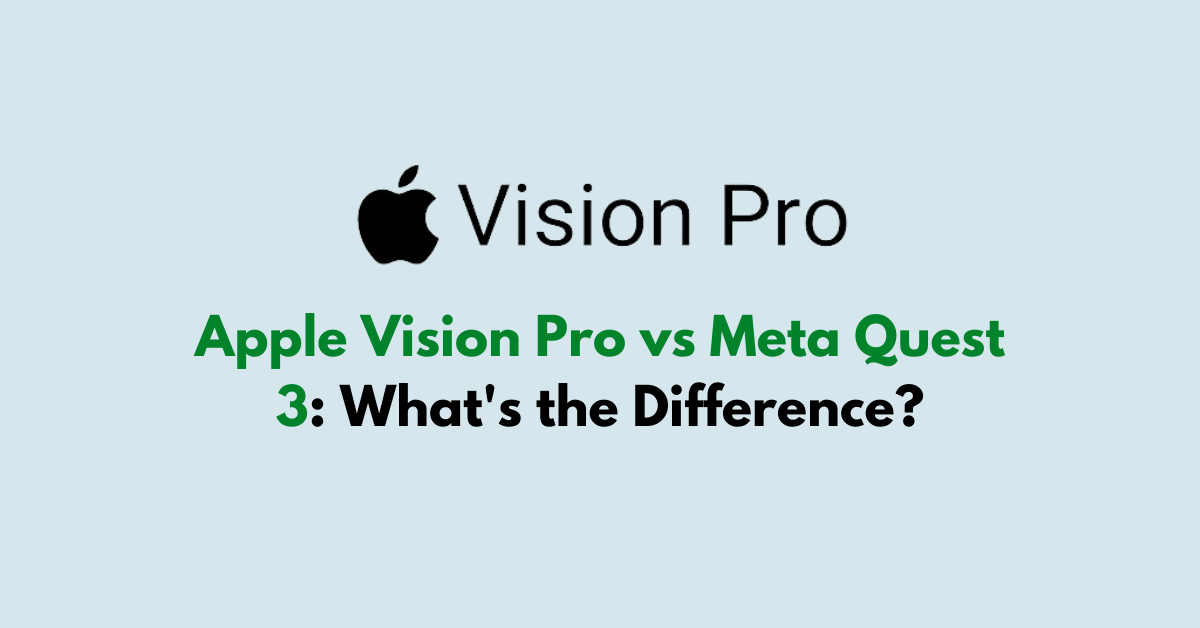When it comes to the world of virtual reality, the Apple Vision Pro and Meta Quest 3 represent two of the most advanced headsets on the market, each with its own set of features and design philosophies.
The Apple Vision Pro emphasizes a tailored user experience with eye-tracking capabilities and a design focused on custom fit and comfort, while the Meta Quest 3 aims to streamline VR with a slimmer profile and standalone operation.
Understanding the differences between these two headsets is key for consumers looking to dive into VR, whether for gaming, productivity, or immersive entertainment.
Let’s explore what sets these two apart and how they’re pushing the boundaries of virtual reality technology.
Apple Vision Pro vs Meta Quest 3: What’s the Difference?
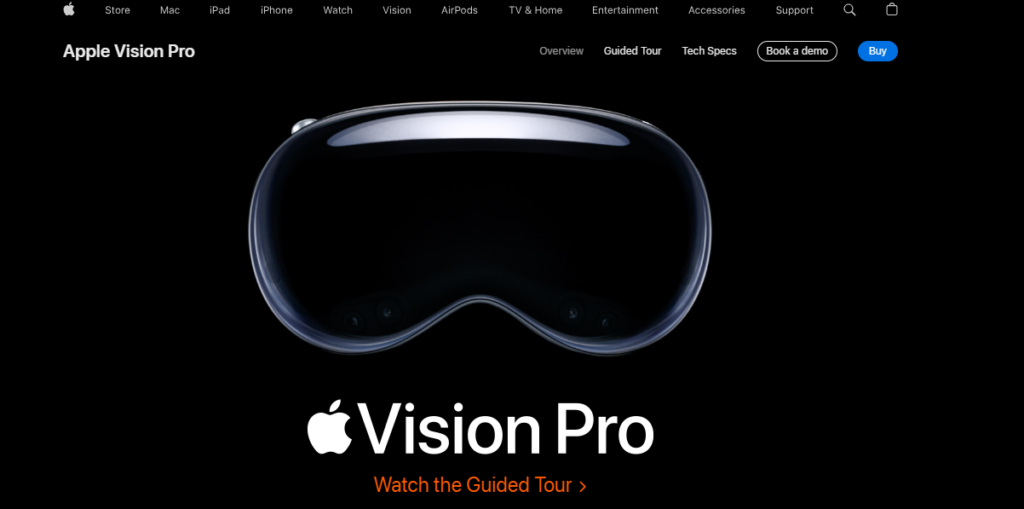
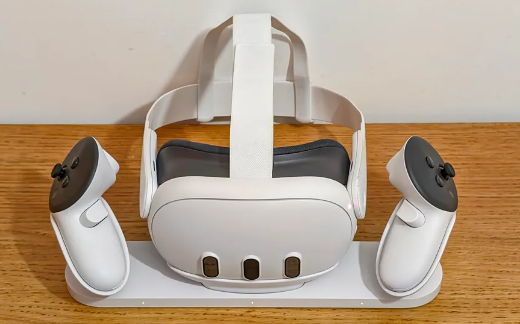
1. Specification Difference Of Apple Vision Pro And Meta Quest 3
Here’s a comparison of the technical specifications for the Apple Vision Pro and Meta Quest 3:
| Specification | Apple Vision Pro | Meta Quest 3 (If available) |
|---|---|---|
| Capacity | 256GB, 512GB, 1TB | 256 GB, 512 GB |
| Display | 23 million pixels | 2064×2208 pixels |
| Refresh Rates | 90Hz, 96Hz, 100Hz; | 72Hz, 80Hz, 90Hz, 120Hz. |
| Chips | M2 and R1 | Snapdragon XR2 |
| Camera | Stereoscopic 3D main camera system, 6.5 stereo megapixels | Two 4-megapixel RGB cameras |
| Sensors | Multiple cameras, IMUs, LiDAR Scanner, Flicker sensor, Ambient light sensor | 5 motion sensors: 3 front sensors and 2 tracking sensors. |
| Battery Life | Up to 2.5 hours general use, 2 hours video watching | 2.9 Hours |
| Connectivity | Wi-Fi 6 , Bluetooth | WiFi, Bluetooth |
| Operating System | vision OS | Quest system software, based on Android source code |
- The Apple Vision Pro and Meta Quest 3 are both advanced VR headsets with their own unique strengths.
- The Vision Pro offers a higher resolution display, larger storage options, and a more diverse sensor array, making it potentially more suitable for users seeking high-fidelity visual experiences and extensive app usage.
- The Meta Quest 3, on the other hand, provides a wider range of refresh rates and may appeal to users looking for a more versatile display performance.
- Both devices offer comparable battery life and connectivity options, allowing for substantial use time and easy integration with other devices.
- The choice between the two may ultimately come down to brand preference, specific feature priorities, and the ecosystem each device supports.
2. Design Comparison Of Apple Vision Pro And Meta Quest 3
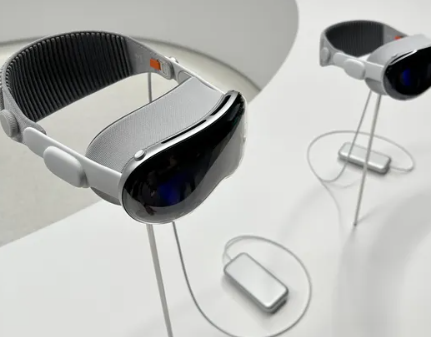
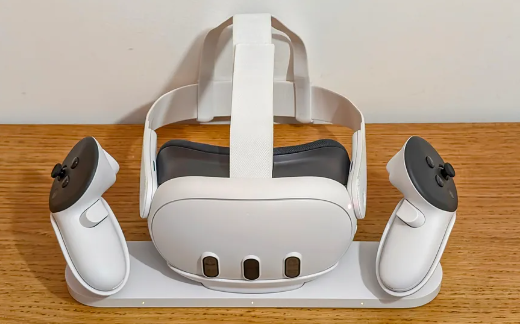
| Feature | Apple Vision Pro | Meta Quest 3 |
|---|---|---|
| Design | Custom-fit with modular sizes, micro-adjustable headband, and no external controllers | One-size-fits-all, 40% slimmer than Quest 2, with included controllers |
| Display | Curved sheet of 3D laminated glass, hides eyes but allows for eye-tracking | Pancake optics for a slimmer design, no eye-tracking feature |
| Cameras & Sensors | 12 cameras, 6 microphones, 5 sensors for eye, hand, and voice tracking | New camera array with dual 4MP RGB cameras and depth sensor for accurate area representation |
| Interaction | EyeSight feature for natural interaction, digital crown for immersion control | Full-color video passthrough, double-tap to toggle immersion, hand-tracking |
| Audio | Spatial audio with “audio pods” | 3D spatial audio, 40% louder than Quest 2, compatible with headphones |
| Power | Requires plugging into a wall outlet or external battery pack | Standalone headset with internal battery |
| Lens Adjustments | Custom Zeiss lens inserts for glasses wearers, no IPD adjustment needed | Adjustable IPD and lens depth, Zenni VR Prescription Lenses available |
- In conclusion, the Apple Vision Pro offers a highly personalized and immersive VR experience with its custom-fit design, advanced eye, hand, and voice tracking capabilities, and unique EyeSight feature for natural interactions.
- Meta Quest 3 maintains a more traditional VR experience with hand controllers and a one-size-fits-all design.
- While the Vision Pro requires an external power source, the Quest 3 is a true standalone headset with an internal battery, making it potentially more convenient for users on the go.
- The Apple Vision Pro is designed with comfort in mind, offering a custom, comfortable fit.
- This suggests that the Apple Vision Pro may offer a more tailored and comfortable wearing experience compared to the Meta Quest 3, which takes a more generalized one-size-fits-all approach.
3. Controllers Difference Of Apple Vision Pro And Meta Quest 3
The game-changing part is the Apple Vision Pro doesn’t have controllers. It works on eye movement equipped with high-end sensor tracking.
The Apple Vision Pro lets you control your VR experience without needing any physical controllers, using hand movements and voice to navigate. It even tracks your eyes so you can do things like search the web just by looking and speaking.
On the other hand, the Meta Quest 3 still uses controllers but has improved how you can use your hands in VR. The new controllers feel better to hold and might make gaming better, but it’s not clear yet how games will work on the Vision Pro.
4. Price Difference Of Apple Vision Pro And Meta Quest 3
Here’s an exact price comparison in tabular form for the Apple Vision Pro and Meta Quest 3:
| Feature | Apple Vision Pro | Meta Quest 3 |
|---|---|---|
| Starting Price | $3,499 for the base model | $499 for the 128GB model |
| Higher Storage Options | $3,700 for 512GB model, $3,900 for 1TB model | $649 for the 256GB model |
- The Apple Vision Pro is significantly more expensive than the Meta Quest 3, with its base model starting at $3,499 compared to the Quest 3’s starting price of $499 for the 128GB version.
- The Vision Pro also offers higher storage options at increased prices, with the 512GB model at $3,700 and the 1TB model at $3,900.
- In contrast, the Quest 3’s higher storage option of 256GB is priced at $649.
Unique Purpose of Apple Vision Pro and Meta Quest 3
When comparing the Apple Vision Pro and Meta Quest 3, it’s clear that each device is designed with a different end-user and purpose in mind.
The Meta Quest 3 is aimed at mass consumer adoption, with a strong emphasis on gaming. In contrast, the Apple Vision Pro is targeted towards a niche market, with a focus on computing and augmented reality (AR) applications.
Meta Quest 3: Gaming for the Masses
The Meta Quest 3 is designed to be an accessible entry point into the world of VR, particularly for gamers.
It’s built upon the success of its predecessors, offering a standalone VR experience that doesn’t require a PC or console.
The Quest 3’s price point, ease of use, and robust game library are all strategically chosen to attract a broad consumer base.
Meta’s goal is to make VR gaming as mainstream as possible, and the Quest 3’s design reflects this, offering a balance between performance and affordability.
If gaming is your main interest, the Meta Quest 3 might be the more suitable choice, while the Apple Vision Pro offers a broader, high-end mixed reality experience that can also cater to gaming needs.
Apple Vision Pro: Niche Computing and AR
The Apple Vision Pro, meanwhile, is crafted for a different segment of the market. It’s a high-end device that prioritizes computing power and AR capabilities, aiming to attract professionals and tech enthusiasts who are willing to invest in cutting-edge technology.
The Vision Pro’s higher price point and features like high-resolution displays and advanced sensors for AR suggest that Apple is not necessarily looking for the same broad appeal as the Quest 3.
Instead, the Vision Pro is positioned as a premium product that serves as a glimpse into the future of wearable computing, much like the first-generation iPad did for tablets.
